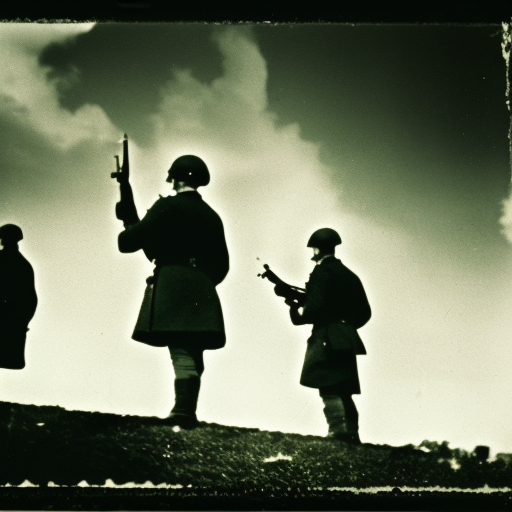Summary: German Invasion of the Netherlands
The German invasion of the Netherlands, also known as the Battle of the Netherlands, took place during World War II. It began on May 10, 1940, when German forces launched a surprise attack on the Netherlands. The invasion aimed to secure strategic positions and gain control over Dutch resources, as well as to establish a base for further military operations.
The German invasion of the Netherlands was part of Adolf Hitler’s larger plan to conquer Western Europe. The Netherlands, with its strategic location and access to important waterways, was a crucial target for the German forces. The invasion was swift and overwhelming, catching the Dutch by surprise.
The German forces employed a combination of airborne and ground troops to carry out the invasion. The Luftwaffe, the German air force, launched a massive aerial assault on Dutch airfields, effectively neutralizing the Dutch air defenses. This allowed German paratroopers to be dropped behind Dutch lines, capturing key bridges and securing important positions.
The Dutch military, although well-equipped and trained, was ill-prepared to face the German onslaught. The Dutch had relied on their neutrality to avoid conflict, and as a result, their defenses were not fully mobilized. The Dutch army, along with their allies, the French and British, attempted to mount a defense, but they were ultimately overwhelmed by the superior German forces.
The German invasion of the Netherlands was marked by several key battles and events. One of the most significant was the Battle of Rotterdam. After the Dutch resistance proved more stubborn than expected, the Germans launched a devastating bombing campaign on the city. The destruction caused by the bombings forced the Dutch to surrender, as they feared further civilian casualties.
Another important event was the Battle of the Grebbeberg. The Grebbeberg, a strategic position in the eastern part of the country, was fiercely defended by the Dutch army. However, the German forces eventually broke through, leading to the surrender of the Dutch defenders.
The Dutch royal family, including Queen Wilhelmina, fled to the United Kingdom following the invasion. From there, they continued to lead the Dutch resistance against the German occupation.
The German invasion of the Netherlands had far-reaching consequences. The occupation of the Netherlands lasted for five years, during which the Dutch people suffered under German rule. The occupation brought about widespread repression, persecution of Jews, and forced labor. The Dutch resistance, although initially fragmented, gradually grew stronger and played a crucial role in undermining German control.
The German invasion of the Netherlands also had implications for the wider war. It provided a base for further German military operations, including the invasion of Belgium and France. The fall of the Netherlands also had a demoralizing effect on the Allied forces, as it demonstrated the speed and efficiency of the German war machine.
In conclusion, the German invasion of the Netherlands during World War II was a swift and overwhelming military campaign. The Dutch were caught off guard and ultimately unable to withstand the superior German forces. The occupation of the Netherlands had significant consequences for the Dutch people and the wider war effort.












